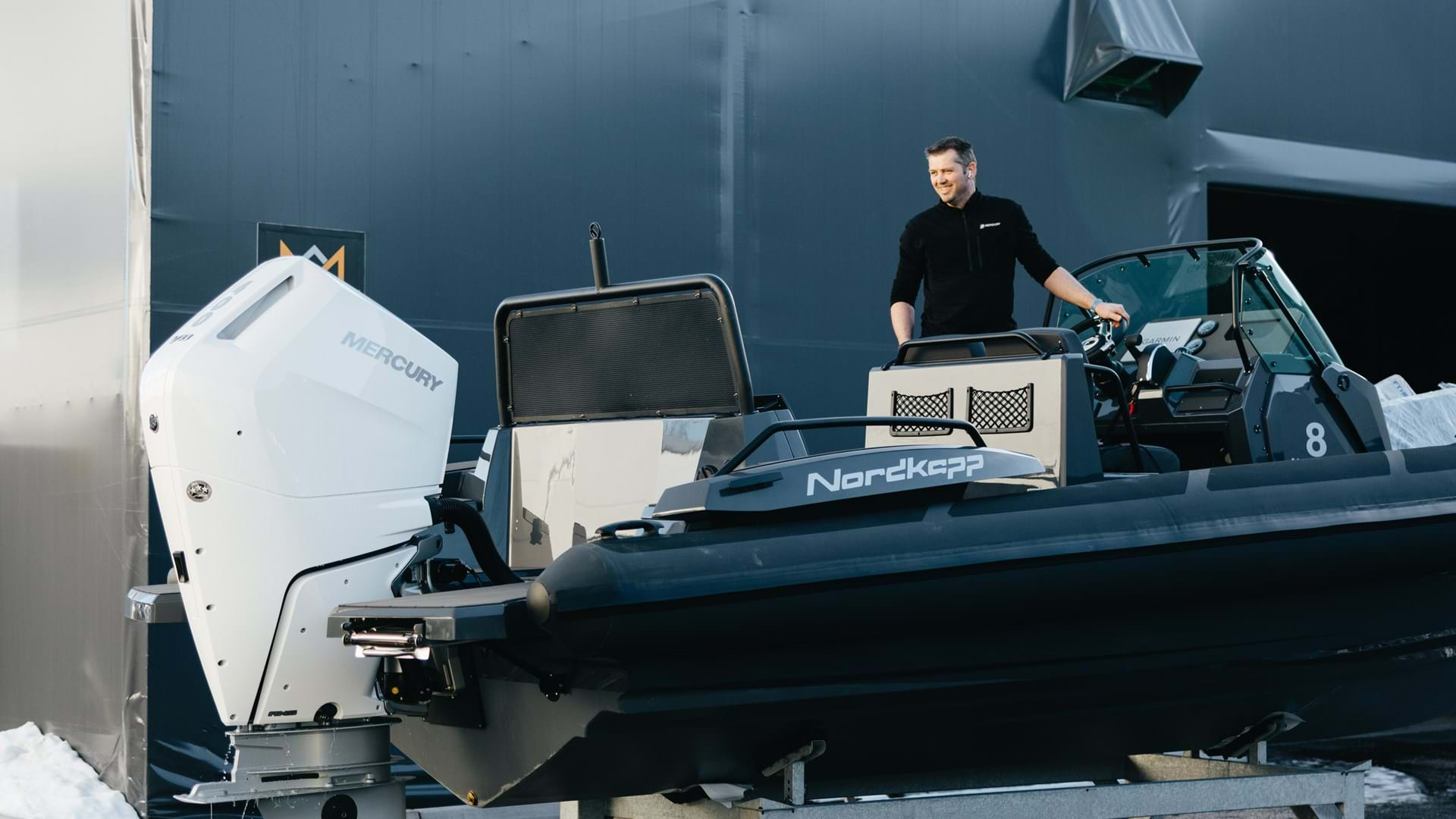
Preparing your boat for winter storage
Essential maintenance tips
The success of next year's boating season begins with winterising your boat correctly. This guide walks you through the key steps, from cleaning your hull to maintaining your engine and batteries.

Cleaning the hull
Hot water pressure washing efficiently removes dirt and buildup from the hull.
A helpful tip: pressure wash your boat shortly after taking it out of the water. This prevents marine growth from drying onto the hull, making the cleaning process much easier later on.
When you start cleaning, it is a good idea to set aside an area at a time (e.g, the starboard side) and work efficiently, either forward or backwards, at the waterline.
Avoid the mist coming into contact with deck details or stickers, as these will quickly be damaged by the water pressure.
The area which always takes the longest is the stern of the boat. This is generally where you'll find the most growth, on and around the engine bracket and the engine itself, so expect to use chemicals to remove the growth. Before using chemicals, rinse off as much as possible with hot water under high pressure as a pre-wash.
Shells and growth
Shells and growth can be a challenge in the fall when the boat is taken out of the water. The volume of growth depends on the conditions where the boat is moored during the season. The area that usually requires the most work is the stern of the boat. Here are some quick tips on what you should do to get rid of the growth:
- Use hydrochloric acid to remove growth on the engine and engine bracket. This will remove all growth effectively and make it easier to rinse off at the end. If you cannot achieve the desired result after one application, you can repeat the treatment.
- NOTE! Remember that hydrochloric acid is a hazardous material; use suitable protective equipment (described on the label of the container). Also, be in a well-ventilated place, preferably outdoors.
- Keep galvanized materials away from the mixture, as the mixture will damage this (for example, your boat trailer). Therefore, it is essential to consider what the boat is standing on when performing this task.
- Use a roller with a handle to put distance between you and the acid mixture.
- You can also use hydrochloric acid on grout at the waterline; this will make it easier to wash the waterline of the boat and ensure it is completely clean.
- Avoid getting hydrochloric acid on decor, etc
- You can also use the hydrochloric acid mixture on acid-resistant details (NOTE: DO NOT use on aluminium and other materials that do not tolerate acid). Check this in advance.

Engine maintenance
Flushing your engine with freshwater is essential to remove any saltwater used as coolant during operation. This helps extend the life of your engine and prevents corrosion during winter storage.
You can easily do this yourself by connecting a freshwater hose to the engine (check your specific engine type to see what kind of fitting is required).
Different engines have different freshwater connections, so it’s important to understand how your engine works and follow the manufacturer’s instructions carefully.
Note: If your engine has a cooling water intake at the front, ensure you tape it off to maintain proper water pressure during the flush.
Turn on the water and make sure it’s flowing through the system before starting the engine. Once the water is running, start the engine and let it idle for at least 10 minutes. This allows the engine to reach operating temperature, so thermostats and valves can fully open, ensuring a thorough flush.
Let the engine run for 10–15 minutes to complete the flushing process, then disconnect the equipment. If your engine has a winterisation mode, this is a good time to activate it. Check what maintenance your engine requires.
Finally, ensure your fuel tank is relatively full and add a fuel stabiliser recommended by the manufacturer. This keeps the fuel fresh and provides a smooth start-up in the spring.

Battery maintenance
Your battery's condition is a crucial safety factor when you're out on the water. Fortunately, a few simple maintenance steps can go a long way in preventing problems.
Once your boat is cleaned and ready for winter storage, remove the batteries and store them in a dry place over the winter. It's a good idea to charge the batteries before storing them, and remember to check them again before reinstalling in the spring.
During the winter, periodic charging is recommended. Most automotive or marine supply stores offer smart chargers that only deliver power when the battery needs it. This simple step helps ensure your boat starts up without issues when the new season begins.
Also, take the time to clean the battery terminals and cable connectors at the end of the season. This improves conductivity and reduces the likelihood of electrical issues in the future.
By following these tips, you'll help ensure your boat stays in great shape for many seasons to come. Good luck with winterising and enjoy the off-season while you dream of new adventures on the water.
Continue reading
Join the Nordkapp family
Start your weekend with a boating story from Nordkapp. Enjoy exclusive invites to events, updates on new models and essential boating tips.



